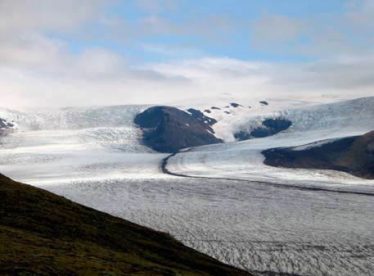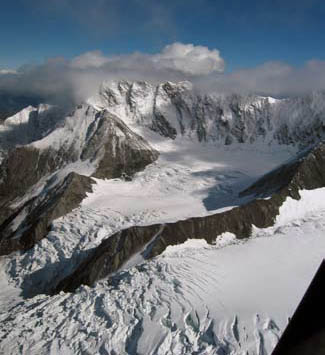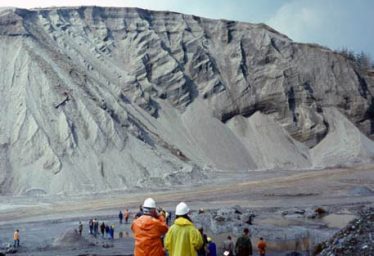Wicklow In The Grip Of An Ice Age








This page summarises the stops and viewpoints of the Wicklow in the grip of an ice age tour put together by Pete Coxon, Fraser Mitchell and Patrick Wyse Jackson, members of IQUA. A booklet with much more information is available for sale on the IQUA website (click here ).
Please check the interactive map by clicking here or download the google earth file by clicking here . You can also download and print a pdf version of the map and information on this page by clicking here .
Below is a summary of the stops and viewpoints to be visited. You can follow these by yourself with the help of the information supplied. Note that the page numbers are in reference of the published fieldguide available in printed form from the IQUA website (click here ). For more information on Quaternary science in Ireland and other fieldguides, please visit www.iqua.ie .
Sheets 50 and 56 of the Ordnance Survey of Ireland’s 1:50,000 Discovery Series cover the areas visited. Most of the sites are on Sheet 56. Inclusion of localities in this Field Guide does not imply access.
1. Kilakee
Viewpoint. Kilakee (GR: O 1217 2235, altitude 380m). Overview of Dublin: A discussion of the geological framework of the Wicklow Mountains, landscape history and the start of an Ice Age. Pages 1-3. The bedrock geology. The solid geology of south County Dublin and County Wicklow. Pages 4-10 (Figures 3, 4 and 5). An introduction to climate change during the Quaternary.
2. Glenasmole
Viewpoint. (GR: O 1237 2069, altitude 475m). View of Glenasmole. An eroded glacial trough subsequently occupied by a glacial lake. Pages 13 and 14. The cold stages of the Quaternary. Figure 16a on page 20 shows how ice pushed up against the northern Wicklows at the LGM. Figure 16b on page 21 shows the extent of the Wicklow Ice Dome at this time.
3. Upland blanket peat and extensive cutting
Viewpoint. (GR: O 1311 1965, altitude 485m). Upland blanket bog showing the scars of extensive turf cutting (such cutting was still active into the early 1980s).
4. Glencree
Viewpoint. (GR: O 1403 1758, altitude 375m). View of Glencree. Discussion of landscape evolution and valley asymmetry.
5. Upper Lough Bray
Viewpoint. (GR: O 1426 1513, altitude 470m, lake is at 430m). Magnificent glacially eroded corrie of Upper Lough Bray. (Optional walk to lake O 1391 1525 435m (15 mins) and summit of moraine (O 1383 1546 465 m) 30 minutes (fast)). The build up of ice during cold stages (pages 5 -15) eventually leads to glaciers large enough to erode. Ice accumulates on plateau areas, drifts and then becomes dense -eventually deforming under its own weight becoming erosive (pages 16 -19).
6. The Liffey Head Bog
Viewpoint. Fieldwork site. (GR: O 1412 1416, altitude 520m). Liffey Head Bog. Upland blanket peat and its history. The high rainfall at this altitude, low temperatures and lack of tree cover after woodland clearance produce this boggy landscape. The vegetational history. since the end of the last glaciation is outlined on pages 34 -44.
7. The Upper Liffey Valley
Viewpoint. (GR: O 1296 1211, altitude 490m). View down the Valley to the Coronation Plantation.
8. The valley of Lough Tay
Viewpoint. (GR: O 1683 0766, altitude 450m). Overview of Lough Tay, rock type change (granite to schist) and glacial overdeepening in a glacial trough. Stay back from the cliff edge. The geology of this valley is mentioned on the bottom of page 2. The valley deepens where the Wicklow Ice Cap (page 21) flowed off the high ground producing deep glacial troughs (pages 19 -24). Glacial overdeepening can lead to slope instability and there is an old landslide visible here (page 22).
9. Roundwood
Lunch. (GR O 1910 0355, altitude 215m).
10. Confluence of Glendasan and Glendalough
Viewpoint. (GR: T 1211 9720, altitude 155m). The glacial troughs of Glendasan and Glendalough combine to form a medial moraine. The monastery at Glendalough is sited at the former confluence of two massive valley glaciers (pages 23 and 24).
11. Mining at the granite/schist boundary
Viewpoint. (GR: T 0994 9821, altitude 280m). Valley deepening and mineral exploitation. The glacial trough of Glendasan again overdeepens where the ice flowed onto the more erodable schist. The boundary is marked by mineralisation (page 3).
12. Lough Nahanagan
Viewpoint. (GR: T 0777 9931, altitude 420m). See page 31-33 . A corrie with evidence of a last flicker of a 100,000 year long glaciation. A glacier sat in this corrie between 12,400 and 11,600 years ago. It formed in the same way as Upper Lough Bray (pages 16 -19). At this site we have radiocarbon dates that allow us to reconstruct the glacier that lay here (page 32) and the evidence for ice reforming at this time and why it did so are on page 33. The vegetational history for this period also shows this remarkable fluctuation (see pages 34 -40) and sees the extinction of the giant Irish deer.
13. King’s River
Viewpoint. (GR: N 9846 0298, altitude 225m). View of the King’s River terraces –an arm of a huge glacial lake -Glacial Lake Blessington (see figure 21 on page 25). Large ice caps are often associated with massive volumes of meltwater and the features in this area are described on pages 25 -30.
14. Stroll through Hollywood Glen
(GR: N 9373 0320, altitude 195m). A walk through Hollywood Glen. A subglacial meltwater channel (pages 29 and 30). Water burst out through here as Glacial Lake Blessington emptied.
15. Pollaphuca
(GR: N 9475 0856, altitude 185m). The road here is dangerous and stopping is not advised. The dam at Pollaphuca blocks a glacial meltwater channel of considerable size and forms the modern Blessington reservoir.
16. Blessington (Pollaphuca) Reservoir
Viewpoint. (GR: N 9536 0965). View over the modern (mid 20th century) reservoir that occupies the lowest position of the former glacial lake (see figure 21 on page 25).




No Comments
Add a comment about this page